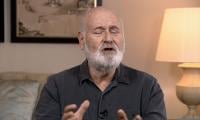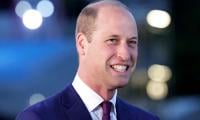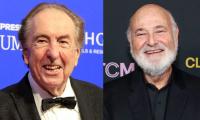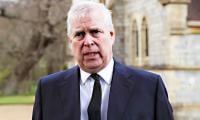In the 1950s, China and the Soviet Union developed some differences after the death of Stalin who passed away in March 1953. During his lifetime, Stalin remained the undisputed leader of the world communist movement.
Soon it emerged that the ‘undisputed’ leader was not as flawless as most leftists had believed. Even his own party started criticizing Stalin posthumously and the new leader – Khrushchev – initiated a de-Stalinization programme that not many communists favoured the world over. The glorified pageant of communist leaders included Marx, Engels, Lenin, and Stalin.
Now after Stalin, Mao also fashioned himself as the rightful successor almost on the same pedestal as the previous four. Though Khrushchev and Mao were nearly the same age, Mao considered himself a better ideologue and the rightful heir to lead the world communist movement.
Khrushchev’s policy of peaceful coexistence with the capitalist world did not find a favourable response from China and Mao frowned upon India’s friendship with the USSR as a betrayal to China. Mao considered himself a more orthodox (ortho=correct or right; dox=doctrine or opinion) Marxist than Khrushchev whom he called a ‘revisionist’. While the Soviet Union was denouncing Stalin’s personality cult, China was creating its own cult in Chairman Mao who was almost as ‘undisputed’ as once Stalin was. Mao also feared that with the demolition of Stalin’s personality cult, the stage was ready for an action replay in China too.
As the differences spiralled, the world communist movement also split into two. In the 1960s, leftists in India and Pakistan faced a dilemma. Those who considered the Soviet Union to be on the right path became pro-Soviet and the Maoists emerged as pro-China. The war between China and India in 1962 further cemented these differences as from the CPI emerged another faction that called itself CPI Marxist or the CPI-M. In Pakistan, the National Awami Party (NAP) was a major leftist party that split into Bhashani-led NAP (pro-China) and NAP-Wali which was pro-Soviet.
In Pakistan, NAP-Wali advocated for better relations with India and the Soviet Union whereas NAP-Bhashani was more inclined towards China and relatively anti-India. NAP Bhashani was more popular in East Pakistan and before the elections of 1971, Bhashani bade farewell to West Pakistan. Leftist leaders such as Abid Hassan Minto and CR Aslam formed the Pakistan Socialist Party and opposed NAP-Wali and the PPP. Bhutto’s PPP was a centre-left party that promised the nationalization of major sectors of the economy. The NAP claimed to be a leftist party that surprisingly formed a government with the rightist JUI in 1972.
One of the reasons the leftists failed was the reluctance of the centre-left and the leftists to join hands. Ideally, the PPP and NAP should have found some common ground but as they targeted each other, rightist forces gained momentum. By crushing the NAP, Bhutto ended up strengthening rightist forces. To appease them Bhutto further tilted to the right as his government passed certain constitutional amendments that tarnished the PPP’s centre-left credentials.
By 1977, a majority of the leftist leadership was languishing in jail under the Bhutto government and when rightist forces joined hands under the banner of Pakistan National Alliance (PNA) to topple Bhutto, there was hardly any leftist or centre-left politician to support Bhutto. The rightist upheaval in 1977 had some tacit approval of the then army chief General Zia who also appeared to have a blessing from the US. The coup by General Zia was a turning point as it moved the country’s course from right to extreme right, giving momentum to fundamentalism in Pakistan.
The leftist revolution in Afghanistan in 1978, gave some hope to the leftists in Pakistan as if it was a milestone for Pakistan too. At that time Pakistan was under a brutal martial law that General Zia had imposed, so there was no question of any public jubilation to celebrate the Afghan revolution in Pakistan by any leftist forces.
Abdul Wali Khan and Ajmal Khattak were two leading Pashtun leaders who wholeheartedly supported the revolution in Afghanistan. They gradually tilted towards more nationalist Pashtun politics thinking that the Pashtun areas in Pakistan would be the first to embrace a socialist revolution on the pattern of Afghanistan.
Mir Ghaus Bakhsh Bizenjo was a more sagacious leftist leader who was circumspect and did not unconditionally advocate for an action replay in Pakistan on the Afghan template. Though he maintained good relations with both Afghanistan and the Soviet Union, Bizenjo preferred to do mainstream politics rather than following a more nationalist agenda as Ajmal Khattak and Wali Khan ended up doing.
During my stay in the Soviet Union in the 1980s, I had on numerous occasions interacted with Ajmal Khattak and Mir Bizenjo when they visited Moscow. One could easily feel that, while Ajmal Khattak had more literary inclination and less political acumen, Bizenjo was far ahead with his better democratic comprehension and credentials.
There were smaller leftist groups also in the 1980s such as the banned Communist Party of Pakistan (Afrasiab Khattak, Dr Aizaz Nazeer, Jam Saqi, Jamal Naqvi, Nazish Amrohvi, Nazeer Abbasi) the Mazdoor Kissan Party (Afzal Banghash, Ishaq Muhammad, Fatehyab Ali Khan), the Pakistan Socialist Party (Abid Minto, CR Aslam, Kaneez Fatima, Shah Muhammad Marri), Qaumi Mahaz-e-Azadi (Mairaj Muhammad Khan, Azhar Jameel), and others.
In the 1990s, after the disintegration of the Soviet Union and the collapse of the socialist bloc, leftist politics the world over felt a setback. Some leftists such as Namal Naqvi denounced all their past struggles as an activity in vain and a dream that was worth nothing. Some could not cope with the shock and developed serious health issues such as Dr Aizaz Nazeer who died at the age of 68. Nazish Amrohvi lost his battle against TB at the Ojha Sanitorium in Karachi. Shah Muhammad Murree remains a steadfast leftist and Marxist and devoted his life to reading and writing, producing dozens of books of immense intellectual value.
Mairaj Muhammad Khan in all his wisdom joined Imran Khan and left it disgruntled after some time. The system co-opted many activists with leftist orientations to join NGOs that mostly focus on cosmetic changes and never question the fundamental contradictions in the capitalist economy.
Now, a million-dollar question: are the PML-N, PPP, and PTI leftist or rightist parties? The PML-N used to be a rightist party when it eulogized General Zia and even observed his death anniversary where Nawaz Sharif himself used to deliver speeches and remembered his benefactor fondly. It was a rightist party when it tried to introduce a nearly theocratic system in the late 1990s. Now I would call it a centre-right party as it has toned down its religious rhetoric, but it takes only a while for a centre-right party to turn further right.
The PPP, I would definitely call a centre-left party though in the past it did commit some acts of commission and omission that could place it in the category or right. Now it is clearly a centre-left party that appears to believe in a more socially liberal and permissive society. It does not appear to harbour any extremist or fundamentalist agenda and has perhaps the widest spectrum within its fold.
The PTI qualifies to be an extremist, fascist or fundamentalist party –rightist in its orientation and full of a personality cult not seen in any other party after the MQM of the Altaf Hussain days.
What are the leftist parties now? The Awami National Party is a centre-left party with a Pashtun base. The National Party is a leftist party that has a country-wide agenda without narrow nationalism. There are various parties such as the Awami Workers Party (Akhtar Hussain, Aasim Sajjad Akhtar), Mazdoor Kissan Party (Taimur Rehman), the Communist Party of Pakistan (Imdad Qazi), Haqooq-e-Khalq Party (Ammar Ali Jan, Farooq Tariq), and others.
Concluded
The writer holds a PhD from the University of Birmingham, UK. He tweets/posts @NaazirMahmood and can be reached at:
mnazir1964@yahoo.co.uk















